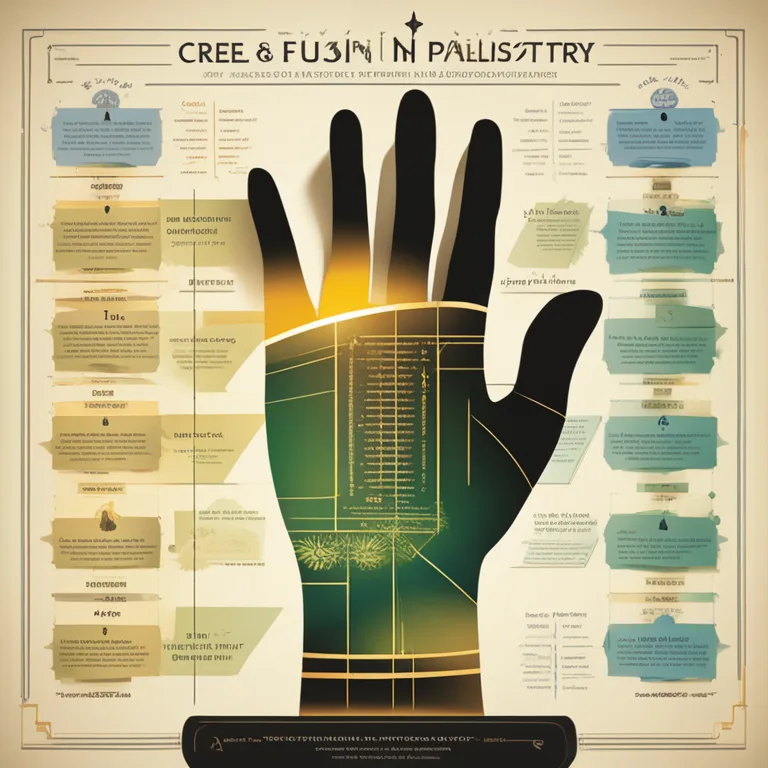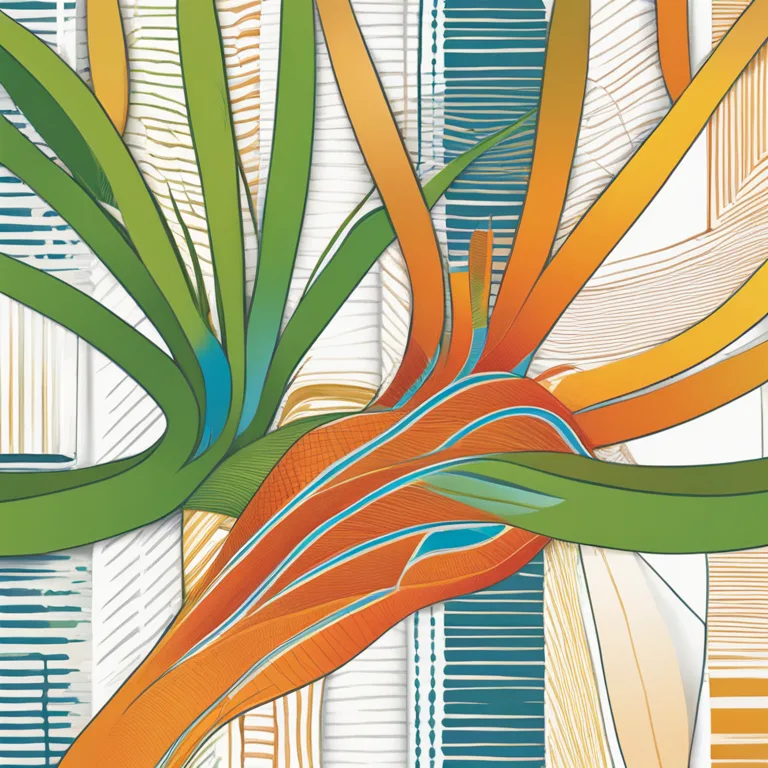
The Genesis of Palm Lines: A Palmistry Insight
Discover how palm lines are formed and what influences their development in the intricate world of palmistry.
article by Nora Pennington
The Science Behind Palm Lines
Palm lines, those unique patterns etched into the skin of our hands, have intrigued humans for centuries. On a biological level, these lines are known as palmar flexion creases. They develop in the womb around the 12th week of gestation and are largely influenced by the movement of the hands, such as clenching and unclenching. This early movement in the fetus contributes to the positioning and depth of the creases that will eventually be interpreted by palmists worldwide.

Genetic and Environmental Factors
The formation of palm lines is a delicate interplay between genetic inheritance and environmental influences. Genetics predetermine the overall layout of the lines; however, subtle nuances can be shaped by environmental factors. Factors such as nutrition, health, and even the position in which a baby tends to rest their hands can subtly alter the lines. As a result, even identical twins can exhibit slight variations in their palmistry patterns.

The Role of Palmistry in Interpreting Lines
In palmistry, these lines are believed to hold a symbolic meaning that extends beyond biological explanations. Practitioners assert that the major lines — the heart, head, and life lines — provide insights into an individual's personality, destiny, and love life. As society embraces a more holistic approach to wellness and self-knowledge in 2024 and beyond, palmistry retains its allure as a tool for self-discovery.

Technological Advances and Palm Line Analysis
With advancements in technology, the analysis of palm lines is no longer restricted to the eyes of an experienced palmist. High-resolution scanners and software can now detect subtleties in palm lines with greater accuracy, enabling a more refined interpretation that complements traditional readings. These digital analyses can provide layered insights that were previously difficult to discern.

Dynamics of Palm Line Changes
While the fundamental lines on our palms remain relatively consistent, minor lines may change over time, reflecting life events and personal growth. This aspect of palmistry underscores the belief that our hands are dynamic maps of our lives, changing as we do. Minute shifts in palm lines can thus be seen as silent testimonies to the journey each individual undergoes.
The Skeptic's View and Scientific Scrutiny
Despite its widespread popularity, palmistry is not without its skeptics, many of whom demand a more scientifically grounded approach to hand analysis. While there is yet to be empirical evidence to underpin the predictive ability of palm lines, research into dermatoglyphics — the study of skin patterns on the fingers and hands — shows that these patterns can be indicators of certain genetic disorders or predispositions.
Breaking Down Misconceptions
Moving forward, it is crucial to differentiate between the science of palm line formation and the mystical interpretations associated with them. This distinction aids in balancing an appreciation for the art of palmistry with a respect for scientific principles. By recognizing the lines as unique identifiers rather than prescriptive narratives, we can enjoy palmistry responsibly and discerningly.
Published: 1/5/2024
Modified: 1/5/2024
More predictions
Come back here soon to learn more about yourself and your future


The Essence of Palmistry: A Modern Guide
Delve into the modern practice of Palmistry: understanding the lines and shapes of your hands to reveal insights about your personality and future.


The Essence of Palmistry: A Guide to Hand Analysis
Delve into the world of palmistry, the ancient practice of interpreting palms to reveal personal insights and future paths.


The Sun Line: A Ray of Personal Brilliance
Discover the significance of the Sun Line on your palm and its implications for fame, success, and creativity in palmistry practices.